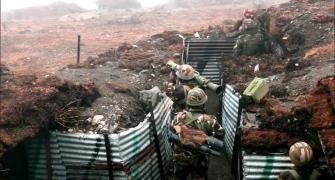An inexpensive technique to remove arsenic from drinking water has been developed, a finding that could be of help to millions of people living in India and other developing countries.
It is through nanotechnology -- the manipulation of materials so tiny that they are measured in nanometers or one billionth of a metre -- that the hazardous elements in drinking water could be removed.
This discovery of ultra-small specks of rust or crystals of magnetite by scientists at Rice University Centre for Biological and Environmental Nanotechnology in Houston has been described in the journal Science, where it has been mentioned that thousands of cases of arsenic poisoning each year are linked to posioned wells.
The researchers said arsenic contamination in drinking water is a global problem and while there are other ways to remove arsenic, they require extensive hardware and high-pressure pumps than run on electricity.
Scientists said their approach involves nanoparticles of iron oxide that can be produced cheaply by heating mixture of rust and vegetable oil.
Iron can bond with arsenic and hence could help remove arsenic from drinking water by simply adding the rusty mixture and then removing the bonded partciles with a magnet.
After making crystals of magnetite, they found that when they were smaller than 12 nanometers, 5,000 times smaller than the width of a human hair, they were 100 or 1,000 times more effective at removing toxic contaminants like arsenic from water than exisiting filters.
According to Vicki Colvin, the center director and the lead author of the study, magnetic particles this small were thought to only interact with a strong magnetic field.
"Because we had figured out how to make these particles in different sizes, we decided to study how big magnetic field we needed to pull the particles out of suspension. We were surprised to find that even hand-held magnets could move the nanoparticles," he said.
In an effort to find out the risks of the arsenic residue being consumed, scientists also plan to undertake field tests.







